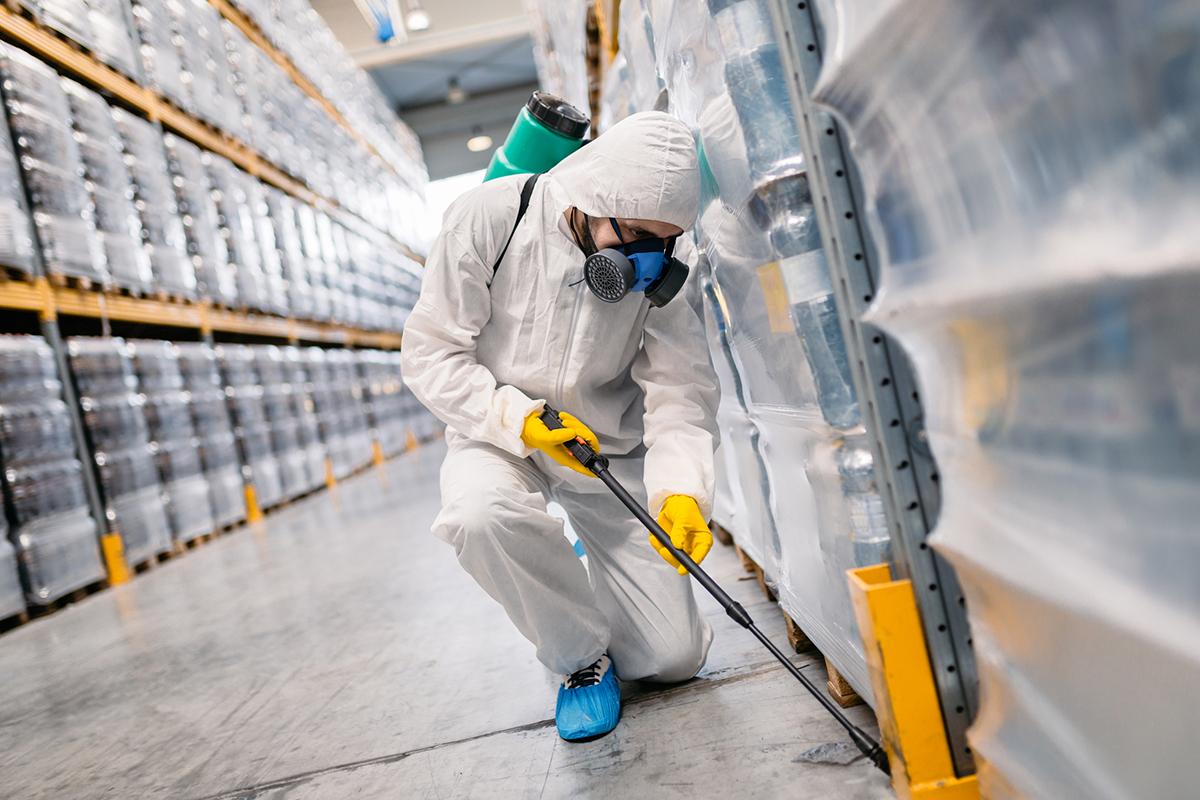A1 Bed Bug Exterminator Charlotte - Specialized Bed Bug Elimination
A1 Bed Bug Exterminator Charlotte - Specialized Bed Bug Elimination
Blog Article
Bed Pest Treatment Malfunction: Comparing Chemical Vs. Non-Chemical Solutions
In the realm of insect control, particularly when managing the consistent problem of bed bugs, the selection between chemical and non-chemical therapy options can be an essential one. Both methods offer distinctive advantages and downsides, influencing aspects such as performance, security factors to consider, and overall cost. By taking a look at the nuanced information of each approach, a more clear understanding of which course to seek in addressing a bed bug invasion can be acquired.
Performance of Chemical Therapies
Chemical treatments for bed insect problems have been extensively recognized for their fast and powerful effectiveness in removing these bugs. When thinking about the effectiveness of chemical therapies, it is critical to comprehend that they can offer a fast and comprehensive option to a bed pest trouble.
Furthermore, chemical treatments have the benefit of offering residual impacts, meaning that they can continue to get rid of bed bugs even after the initial application. This residual action is particularly advantageous in combating any kind of potential re-infestations. Additionally, the rapid activity of chemical therapies can bring alleviation to people encountering serious bed bug infestations, permitting them to reclaim control of their living rooms swiftly.
Safety And Security Problems With Chemical Solutions
One crucial aspect that calls for careful consideration when using chemical solutions for bed pest therapy is ensuring the safety of residents and the setting. While chemical therapies can be effective in getting rid of bed pests, they may pose dangers if not taken care of properly. One of the main safety worries with chemical options is the possible damage they can create to human health. Exposure to certain chemicals made use of in bed insect treatments can bring about respiratory system problems, skin irritability, or various other negative reactions, specifically in individuals with pre-existing conditions or level of sensitivities. Additionally, improper application or dose of chemical pesticides can result in poisonous deposits lingering in the cured area, posturing long-lasting health threats to owners.
In addition, the environmental influence of chemical services is one more considerable factor to consider. Some chemicals utilized in bed insect therapies might be unsafe to valuable insects, wild animals, and environments if they seep right into the soil or water systems. It is necessary to make use of chemical treatments carefully, adhering to safety guidelines, and considering much less toxic choices to mitigate these threats and ensure the efficient and safe monitoring of bed pest problems.
Benefits of Non-Chemical Methods
Taking into consideration the prospective safety problems and ecological effect connected with chemical solutions for bed bug treatment, exploring non-chemical strategies provides a promising choice with a number of distinct advantages. Non-chemical treatments are environmentally pleasant, as they do not add to air or water contamination, making them a sustainable selection for insect control.
In addition, non-chemical options can be efficient in targeting bed insects, consisting of hard-to-reach areas where chemical therapies may not permeate. Techniques such as heat therapy, vacuuming, vapor cleansing, and mattress coverings supply complete removal without using damaging chemicals. Moreover, non-chemical strategies can be much less disruptive, calling for minimal prep work and enabling for quicker reentry right into dealt with areas. Overall, selecting non-chemical bed insect treatment techniques not just focuses on security and environmental security yet additionally ensures reliable and detailed bug control.
Limitations of Non-Chemical Treatments

Additionally, non-chemical therapies commonly call for multiple applications to achieve successful elimination. This can be lengthy and might not constantly guarantee total removal of all bed pests and their eggs, particularly in hard-to-reach or surprise places.
In addition, the success of non-chemical therapies greatly straight from the source depends on proper implementation and thoroughness, which can be testing for individuals without expert experience. Poor application of non-chemical techniques might result in incomplete elimination, causing relentless problems and the demand for additional treatments.
For that reason, while non-chemical treatments have their advantages, it is vital to recognize these limitations and consider them when figuring out one of the most efficient approach for handling bed pest invasions.
Cost Contrast: Chemical Vs. Non-Chemical Options
Provided the constraints connected with non-chemical therapies, an essential element to evaluate in the context of bed pest administration is the expense contrast in between chemical and non-chemical options. In comparison, non-chemical therapies like heat treatment or vapor can be much more expensive, with prices varying from $1,000 to $6,000 for an entire home. While the initial price of chemical treatments might seem lower, multiple treatments may be needed to totally eradicate the invasion, possibly increasing the general expense.
Conclusion

Thinking about the possible security worries and ecological effect linked with chemical solutions for bed insect therapy, checking out non-chemical techniques presents an appealing choice with a number of unique advantages.Offered the limitations linked with non-chemical read the full info here therapies, an essential element to review in the context of bed pest management is the price contrast in between chemical and non-chemical alternatives. In contrast, non-chemical treatments like heat treatment or vapor can be more expensive, with prices ranging from $1,000 to $6,000 for an entire home. While the first price of chemical treatments might seem lower, numerous therapies might be needed to fully eliminate the infestation, potentially enhancing the general price.In conclusion, when contrasting chemical and non-chemical bed pest treatment options, it is vital to take into consideration performance, safety, benefits, limitations, and price.
Report this page